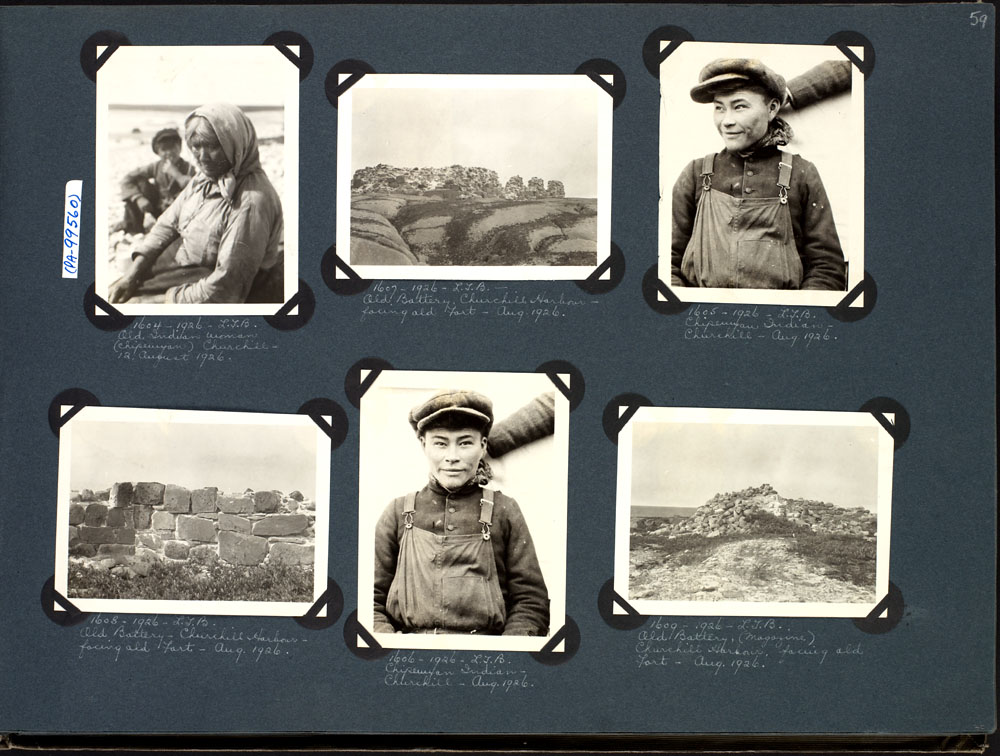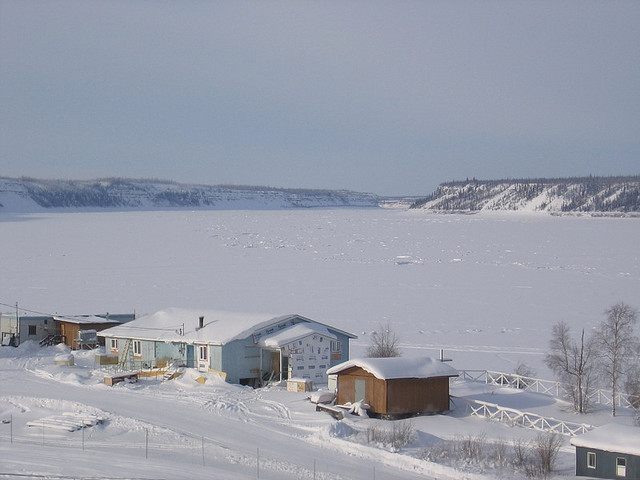|
ûmile Petitot
ûmile-Fortunûˋ Petitot (also known as ûmile-Fortunûˋ-Stanislas-Joseph Petitot) (Inuk name, ''Mitchi Pitchitork Tchikraynarm iyoyûˋ'', meaning "Mr. Petitot, son of the Sun") (December 3, 1838 ã May 13, 1916), a French Missionary Oblate, was a notable Canadian northwest cartographer, ethnologist, geographer, linguist, and writer. Early years Petitot was born in Grancey-le-ChûÂteau-Neuvelle, France. His father, Jean-Baptiste Petitot, was a clockmaker; his mother was Thûˋrû´se-Julie-Fortunûˋe Gagneur. Petitot attended the minor seminary and the Collû´ge du Sacrûˋ-Céur in Grancey. In 1859, he took minor orders of the priesthood before joining the Oblates in September 1860. His training occurred at Notre-Dame-de-l'Osier, and on March 15, 1862, he was ordained in Marseilles. Fourteen days after his ordination, he left for Canada's Mackenzie River. The young missionary Petitot traveled with Bishop Alexandre-Antonin Tachûˋ from Marseilles via Liverpool (where they were joined by an ... [...More Info...] [...Related Items...] OR: [Wikipedia] [Google] [Baidu] |
Grancey-le-ChûÂteau-Neuvelle
Grancey-le-ChûÂteau-Neuvelle () is a commune in the CûÇte-d'Or department in eastern France. The castle was built between 1705 and 1725 by Jacques Elûˋonor Rouxel de Grancey on the location of a medieval fortress, erected in 1098 by Ponce de Grancey. Population See also *Communes of the CûÇte-d'Or department The following is a list of the 698 communes of the CûÇte-d'Or department of France. The communes cooperate in the following intercommunalities (as of 2020):Communes of CûÇte-d'Or {{CûÇteOr-geo-stub ... [...More Info...] [...Related Items...] OR: [Wikipedia] [Google] [Baidu] |
Northwest Territories
The Northwest Territories (abbreviated ''NT'' or ''NWT''; french: Territoires du Nord-Ouest, formerly ''North-Western Territory'' and ''North-West Territories'' and namely shortened as ''Northwest Territory'') is a federal territory of Canada. At a land area of approximately and a 2016 census population of 41,790, it is the second-largest and the most populous of the three territories in Northern Canada. Its estimated population as of 2022 is 45,605. Yellowknife is the capital, most populous community, and only city in the territory; its population was 19,569 as of the 2016 census. It became the territorial capital in 1967, following recommendations by the Carrothers Commission. The Northwest Territories, a portion of the old North-Western Territory, entered the Canadian Confederation on July 15, 1870. Since then, the territory has been divided four times to create new provinces and territories or enlarge existing ones. Its current borders date from April 1, 1999, when the ... [...More Info...] [...Related Items...] OR: [Wikipedia] [Google] [Baidu] |
Sahtu People
The Sahtû¤ or North Slavey (historically called ''Hare'' or ''Hareskin Indians'') are a Dene First Nations people of the Athabaskan-speaking ethnolinguistic group living in the vicinity of Great Bear Lake (''Sahtû¤'', the source of their name), Northwest Territories, Canada. The Sahtû¤ peoples live in Colville Lake, Deline, Fort Good Hope, Norman Wells and Tulita which form the Sahtu Region of the NWT. The Dene of the region are represented by the Sahtu Dene Council who, in 1993, signed the Sahtu Dene and Metis Comprehensive Land Claim Agreement. Sahtû¤ groups include the ''Hare Dene'' (K'ahsho Got'ine District, today: Colville Lake and Fort Good Hope), ''Bear Lake Dene'' (Dûˋline District), and ''Mountain Dene'' (Tulit'a District). They call themselves also ''èehdzo GotãáÝä´ne'' (Trap People). Ethnography An early description of Sahtû¤ cultures is given in Alexander Mackenzie's journal of his voyage down the Mackenzie River to the Arctic Ocean in 1789. Although ther ... [...More Info...] [...Related Items...] OR: [Wikipedia] [Google] [Baidu] |
Cree
The Cree ( cr, nûˋhinaw, script=Latn, , etc.; french: link=no, Cri) are a Indigenous peoples of the Americas, North American Indigenous people. They live primarily in Canada, where they form one of the country's largest First Nations in Canada, First Nations. In Canada, over 350,000 people are Cree or have Cree ancestry. The major proportion of Cree in Canada live north and west of Lake Superior, in Ontario, Manitoba, Saskatchewan, Alberta and the Northwest Territories. About 27,000 live in Quebec. In the United States, Cree people historically lived from Lake Superior westward. Today, they live mostly in Montana, where they share the Rocky Boy Indian Reservation with Ojibwe (Chippewa) people. The documented westward migration over time has been strongly associated with their roles as traders and hunters in the North American fur trade. Sub-groups / Geography The Cree are generally divided into eight groups based on dialect and region. These divisions do not necessarily r ... [...More Info...] [...Related Items...] OR: [Wikipedia] [Google] [Baidu] |
Chipewyan
The Chipewyan ( , also called ''Denûˋsolinûˋ'' or ''Dû¨nesé°éáÝä´nûˋ'' or ''Dû¨nû¨ Sé°éáÝnû¨ä'', meaning "the original/real people") are a Dene Indigenous Canadian people of the Athabaskan language family, whose ancestors are identified with the Taltheilei Shale archaeological tradition. They are part of the Northern Athabascan group of peoples, and come from what is now Western Canada. Terminology The term ''Chipewyan'' (ÃÃÃÛÃÈ) is a Cree exonym meaning ''pointed hides'', referring to the design of their parkas. The French-speaking missionaries to the northwest of the Red River Colony referred to the Chipewyan people as Montagnais in their documents written in French. Montagnais simply means "mountain people" or "highlanders" in French and has been applied to many unrelated nations across North America over time. For example the Neenolino Innu of northern Quebec are also called "Montagnais". Demographics Chipewyan peoples live in the region spanning the w ... [...More Info...] [...Related Items...] OR: [Wikipedia] [Google] [Baidu] |
Blackfoot
The Blackfoot Confederacy, ''Niitsitapi'' or ''Siksikaitsitapi'' (ÿÃÃÏÃÏÃÈÃ₤, meaning "the people" or " Blackfoot-speaking real people"), is a historic collective name for linguistically related groups that make up the Blackfoot or Blackfeet people: the ''Siksika'' ("Blackfoot"), the '' Kainai or Blood'' ("Many Chiefs"), and two sections of the Peigan or Piikani ("Splotchy Robe") ã the Northern Piikani (''AapûÀtohsipikûÀni'') and the Southern Piikani (''Amskapi Piikani'' or ''Pikuni''). Broader definitions include groups such as the ''Tsû¤û¿tûÙnû '' ( Sarcee) and ''A'aninin'' (Gros Ventre) who spoke quite different languages but allied with or joined the Blackfoot Confederacy. Historically, the member peoples of the Confederacy were nomadic bison hunters and trout fishermen, who ranged across large areas of the northern Great Plains of western North America, specifically the semi-arid shortgrass prairie ecological region. They followed the bison herds as they migr ... [...More Info...] [...Related Items...] OR: [Wikipedia] [Google] [Baidu] |
Legend
A legend is a Folklore genre, genre of folklore that consists of a narrative featuring human actions, believed or perceived, both by teller and listeners, to have taken place in human history. Narratives in this genre may demonstrate human values, and possess certain qualities that give the tale verisimilitude (literature), verisimilitude. Legend, for its active and passive participants may include miracles. Legends may be transformed over time to keep them fresh and vital. Many legends operate within the realm of uncertainty, never being entirely believed by the participants, but also never being resolutely doubted. Legends are sometimes distinguished from myths in that they concern human beings as the main characters rather than gods, and sometimes in that they have some sort of historical basis whereas myths generally do not. The Brothers Grimm defined ''legend'' as "Folklore, folktale historically grounded". A by-product of the "concern with human beings" is the long list o ... [...More Info...] [...Related Items...] OR: [Wikipedia] [Google] [Baidu] |
Athabascan Languages
Athabaskan (also spelled ''Athabascan'', ''Athapaskan'' or ''Athapascan'', and also known as Dene) is a large family of indigenous languages of North America, located in western North America in three areal language groups: Northern, Pacific Coast and Southern (or Apachean). Kari and Potter (2010:10) place the total territory of the 53 Athabaskan languages at . Chipewyan is spoken over the largest area of any North American native language, while Navajo is spoken by the largest number of people of any native language north of Mexico. ''Athebaskan '' is a version of a Cree name for Lake Athabasca ( crm, áû¯apáskáw, script=Latn 'herethere are reeds one after another'), in Canada. Cree is one of the Algonquian languages and therefore not itself an Athabaskan language. The name was assigned by Albert Gallatin in his 1836 (written 1826) classification of the languages of North America. He acknowledged that it was his choice to use that name for the language family and its asso ... [...More Info...] [...Related Items...] OR: [Wikipedia] [Google] [Baidu] |
Fort Good Hope, Northwest Territories
Fort Good Hope (formerly ''Fort Hope'', ''Fort Charles'', also now known as the ''Charter Community of K'asho Got'ine''), is a charter community in the Sahtu Region of the Northwest Territories, Canada. It is located on a peninsula between Jackfish Creek and the east bank of the Mackenzie River, about northwest of Norman Wells. The two principal languages are North Slavey and English. Hunting and trapping are two major sources of income. The Church of Our Lady of Good Hope, a National Historic Site, is located in the community. The church, completed in 1885, was once home to Father ûmile Petitot. History The settlement was established as a North West Company fur trading outpost in 1804 (or 1805). It was known mainly as Fort Good Hope, but also as Fort Hope and Fort Charles (not the same as the HBC fort from 1686) The outpost was relocated several times from the current site; between 1804 to before 1823 somewhere between Arctic Red River and Peel River (by NWC and HBC) ne ... [...More Info...] [...Related Items...] OR: [Wikipedia] [Google] [Baidu] |
Fort Resolution, Northwest Territories
Fort Resolution (''DenáÝänu Ké°äáä'' (pronounced "deh-nih-noo-kwenh") "moose island place") is a hamlet in the South Slave Region of the Northwest Territories, Canada. The community is situated at the mouth of the Slave River, on the shores of Great Slave Lake, and at the end of the Fort Resolution Highway (Highway 6). It is the headquarters of the Deninu Ké°áä First Nation, whose Chief is Louis Balsillie. It is the oldest documented European community in the Northwest Territories, built in 1819, and was a key link in the fur trade's water route north. Fort Resolution is designated as a National Historic Site of Canada as the oldest continuously occupied place in the Northwest Territories with origins in the fur trade and the principal fur trade post on Great Slave Lake. Fort Resolution's Deninoo School offers K-12 schooling. The town also has a hockey arena, community hall, a nursing station, a youth centre, Royal Canadian Mounted Police, a bed and breakfast, a 'Northern' ... [...More Info...] [...Related Items...] OR: [Wikipedia] [Google] [Baidu] |



